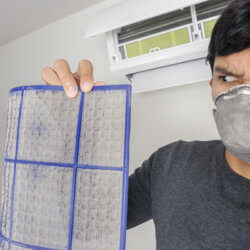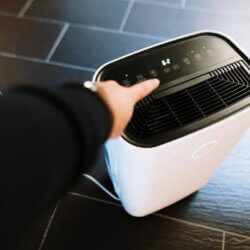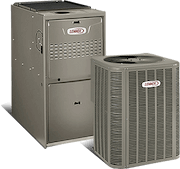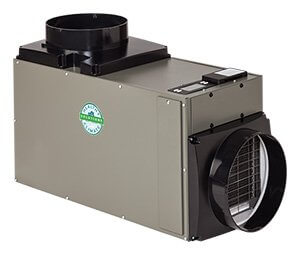
During summer, it is not only the heat you have to be concerned about. Relative humidity also plays an important role in determining just how hot the air feels. Hot air can hold a lot of moisture, which greatly impacts the humidity level of a home. If the humidity level goes above 55%, you may want to consider investing in a dehumidifier to protect your home and protect the health of your loved ones. But, how does a humidifier work?
Interestingly, most dehumidifiers work similar to how a vacuum cleaner or air conditioner does. A fan inside the dehumidifier sucks in the air, which passes through an evaporator coil. As the air cools down, the moisture condenses into water, which falls down into a reservoir. The air is then reheated and the dehumidifier siphons it back into the room, while keeping the moisture contained within the unit.
Types of Dehumidifiers
Now that you know the basics of how a humidifier works, there are two types you should know about:
- Refrigerant – This type of humidifier is the one that is most used these days. Damp air is sucked into the dehumidifier and then passes through an evaporator coil. As the air cools down, the water vapor drips down into a reservoir tank.
- Desiccant – With this type of dehumidifier, the excess moisture from the air is sucked in to a silica gel, a desiccant material known to absorb moisture. This type of humidifier is perfect for smaller spaces such as closets, kitchens, and bathrooms.
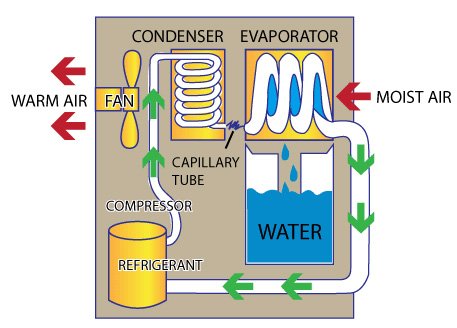
Components of a Dehumidifier
To fully answer the question, “How do dehumidifiers work?”, you should also know the parts of a dehumidifier. While not all dehumidifiers are made exactly the same, some common parts include:
- Fan compressor that sucks in air
- Evaporator coils that cool the air
- Reheater to make the air warm again
- Reservoir that collects the water
- Humidistat that detects the humidity level
- Condensate pump that pumps water from the unit
When Do You Need a Dehumidifier for the Home?
If you constantly feel that your room is too stuffy, or if things start to smell musty and everything feels damp to the touch, your home could be suffering from high humidity levels.
This is bad for your health and the home. It attracts unwanted allergens such as mold spores and dust mites, which can trigger an asthma or an allergy attack. It can also affect the structural foundation of your home and damage your furniture. Installing a dehumidifier will help remove the excessive moisture from the air, making the home drier and the air cleaner.
How to Install a Dehumidifier at Your St. Louis Home
If you find yourself in need of a dehumidifier in the greater St. Louis area, contact the experts at Galmiche & Sons today. We can help you choose the right dehumidifier according to your needs and budget. We also do repairs and maintenance to ensure that your dehumidifier is working at its full potential.
Finally, if you still find yourself asking, “How do dehumidifiers work?”, contact our heating and air conditioning experts at 314-993-1110 to learn more.



